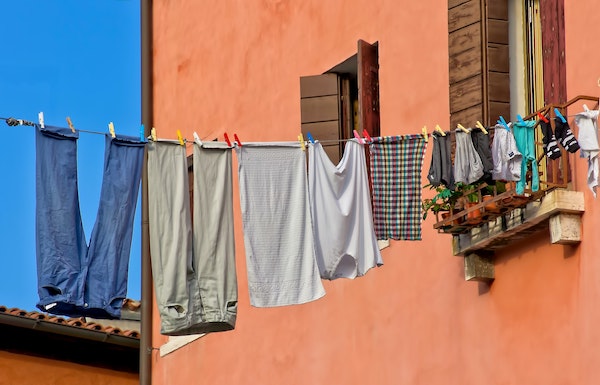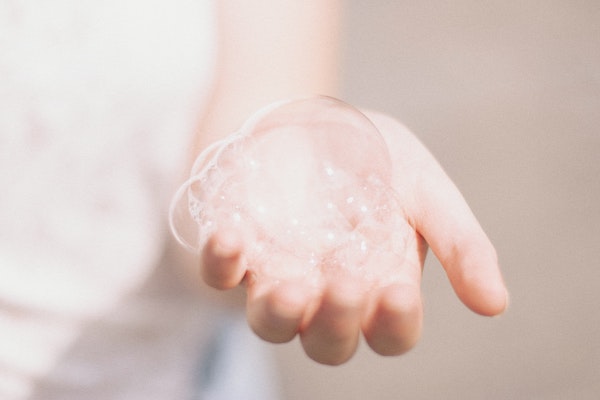Doing laundry is one of those necessary tasks that most people dread doing. It also requires more thought than most may think. Aside from separating the dark, white, and colored clothes, you also have to think about the temperature of the water, and what kind of detergent to use.
If you’re doing your own laundry at home, these decisions really matter. Doing your laundry isn’t just about keeping your clothes clean, it’s also a sustainability thing. Doing laundry properly helps you maximize wear and makes sure that you can keep your garment for as long as possible.

And choosing the right kind of detergent will help you accomplish those goals.
Technology has revolutionized the way we do literally everything—even washing clothes. There are several types of detergents to choose from, mainly powder, liquid, and pods. But through the lens of cost, performance, and sustainability, some are better than others.
But first, the right way to wash
Just like cooking, doing the laundry is one of those life skills that everyone needs to learn. While it may be easier to just have your laundry done at the laundromat and pick it up later, it’s far cheaper and better for your clothes to do your laundry at home. Washing machines are a godsend because all you have to do is load your clothes in, add detergent, and wait.
It’s important to know how much detergent to add, though. The main rule of thumb to follow here is “the less, the better.” If you’re not hand washing, your washing machine acts as your scrubbing substitute. It’s not actually the soap that cleans your clothes, it’s the friction of your garments rubbing against one another that removes stains.
As humans, we like seeing signs of things going well, which means we might add too much detergent to see the suds build up. To us, that’s a sign that our clothes are getting cleaner. In reality, though, it might lead to detergent buildup and can ruin your clothes in the long run.

If you’re using a powder detergent, it’s best to dissolve it in water before adding it to your laundry. Adding the powder directly to your load won’t ensure that all the powder will dissolve, which may leave you with itchy, crusty clothes.
Washing delicate items in the washing machine requires friction, too. But if you’re worried about potential damage while it’s spinning along, you can always use mesh laundry bags to minimize the risk.
For heavy stains, you should spot treat your clothes before tossing them into the washing machine. You can do this by applying a small amount of detergent (make a paste with the powder if that’s what you’re using) and then letting it sit while you get everything else ready.
For some people, another step in the laundry process is fabric softener. While some people like to use this to make their clothes feel nice and soft, all fabric softener really does is add another layer of substance to your clothes to give them the illusion of softness.
And finally, air drying is the best way to dry your clothes. Dryers can be fast and convenient, but you also run the risk of damaging your clothes due to repeated heat exposure—especially delicate items or things that are made with synthetic fibers. If you want to make your clothes last, the sun and fresh air are your best friends.
Powder detergent
Powder detergents are one of the most common detergents available locally. Out of the three, it’s the most cost-effective (which is something we all need these days) and can clean your clothes efficiently. This type of detergent is also in a dry form, which means it’s relatively lighter and requires less packaging than liquid detergent or pods. That makes it a more eco-friendly option for those who consider this when doing the laundry.
In contrast to liquid detergent and pods, powder will also last you longer in terms of use and shelf life because of its dry formula. Powder detergent also works well with heavy stains. If you’re an active person or if you have kids that always play and end up dirty for reasons unbeknownst to you (as kids do), powder will get rid of those heavy smells and stains.
There are cons to using powder detergent, though.
One, it can be a bit difficult to measure how much you need. The best way to figure it out is by reading the label, of course, but trial and error will probably end up being your best bet. Again, the less, the better. Another con is mild inconvenience, as you’ll have to dissolve powder detergent in water first before adding to your load to get the best results. This can be more time consuming, but it’s a necessary step in the powder detergent laundry process.
Liquid detergent
Liquid detergents are more convenient than their powder counterparts. It comes in liquid form, which means you don’t have to dilute it. You can just pour it right into your washing machine and let it do its thing.
It’s also better for treating oil and grease, so people who cook (or are messy eaters) will have an easier time with liquid. Pretreating is also a breeze because there are no additional steps you need to take. Some washing machines also only work with liquid detergent, especially the new high efficiency ones.
There’s a price to pay in exchange for all the convenience, though. Liquid detergents require more packaging than powder, which means it’s not something eco-conscious people can purchase lightly. It’s also made of liquid, which is heavier and can require more fuel to transport.
The liquid nature of the detergent can also make it too easy for you to add too much to your laundry. That means more product goes to waste and your clothes won’t get as clean as you’d like due to residue.
Pods
You don’t have those issues with pods, though. Single-use laundry pods come pre-packaged so there’s no potential for using too much for a single load of laundry. It’s easy to use because there’s no measuring involved in the process, and you just chuck it in.
Compared to powder and liquid detergents, though, pods are more expensive. They’re the most convenient and easy-to-use option, but you’ll have to make sure to do enough laundry to fit one pod. This means doing small loads isn’t the best option if you’re concerned about cost and efficiency.
There’s also the issue of the film that contains the liquid in the pods. While most companies claim that the film is biodegradable and can dissolve safely in water, a recent study found that the film just breaks down into microplastic particles.
The material used in the film can technically be biodegradable, but most wastewater facilities around the world don’t have the technology to treat it properly. This means pod films from around the world have likely made it into our waterways and oceans in the form of microplastics.
However convenient pods may be, they also pose a safety issue—especially if you have small children. The colorful little nuggets of detergent can look like candy to kids, which makes it a choking and poisoning hazard if you don’t store them correctly and out of reach. Remember the Tide pods challenge from 2018?
Yeah. That happened.
With all these considerations you have to make, the most important thing to remember is what you want to get out of your laundry. If you’re looking for something cost-effective and sustainable, go with powder. For people who prioritize high-powered stain removal and convenience, liquid detergent is your best bet. If your goal is easy, breezy laundry that doesn’t require much thought—and you don’t mind the price—pods are the way to go.
So the next time you pick up some detergent, just remember what you use matters.

